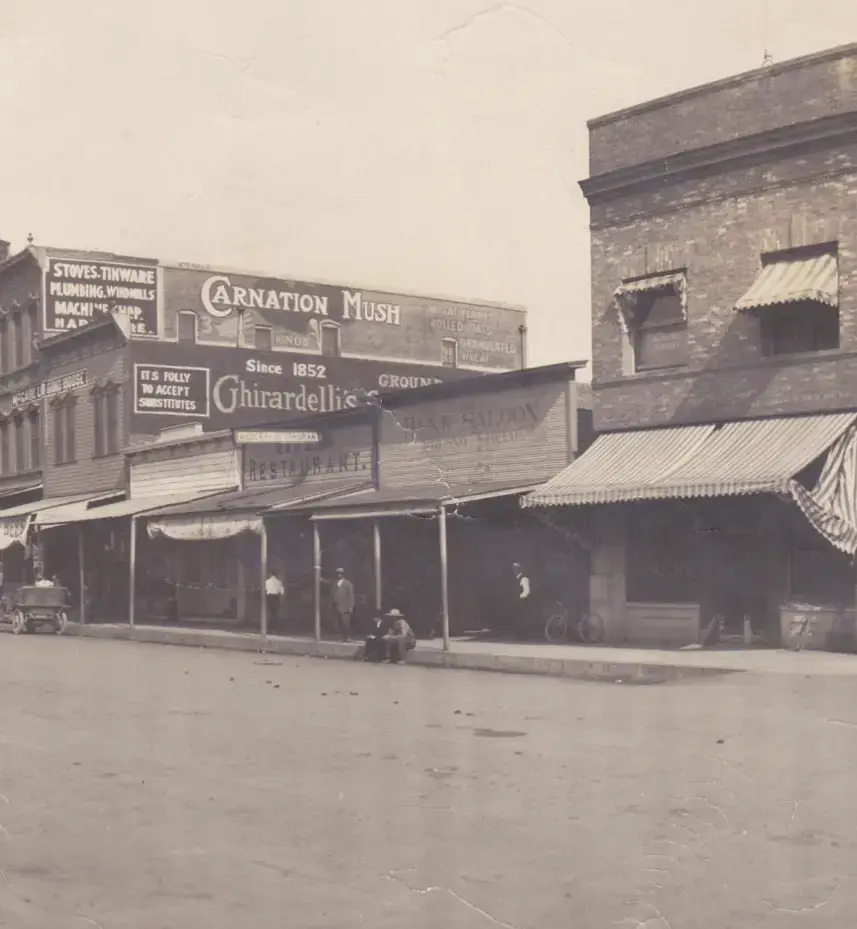Madera was founded in 1876, and from then until now it has been ever mindful of the constant threat of fire. That fear is real. There have been enough conflagrations on Yosemite Avenue alone to fill a book on the subject.
One of the more memorable blazes was the 1886 fire, which destroyed Mace’s Hotel on the corner of Yosemite Avenue and E Street. Another disaster that stands out in the city’s history is the 1890 burning of Cornelius Curtin’s livery stable at the corner of Yosemite and C Street. History of course will always remember the courthouse fire of 1906.
By any calculation, these fires were disasters. Both money and lives have gone up in flames on Yosemite Avenue. There is one downtown fire; however, the results of which caused very little distress to the residents of Madera. Very few mourned the flaming inferno of 1918. In that fire, a good portion of the block on the south side of Yosemite Avenue between D and C Streets was wiped out, and only a handful of people cared.
Town Marshal John Barnett was making his midnight rounds on April 20. He had just walked past the saloon and bowling alley on the corner of C Street and Yosemite and was proceeding west, checking the establishments on the south side of Madera’s main street.
Next to the bowling alley stood the fire station and then the post office. Both appeared secure. The harness shop west of the post office was locked up as well. Barnett continued past the large, three-story brick building that housed a barber shop, saloon, carriage house, and lodge hall. Everything seemed to be in order.
When Barnett reached the McCabe House, the two-story building belonging to Fred Barcroft, the brick structures ended, and an eyesore began. Three wooden buildings stood between the McCabe house and the First National Bank on the corner of Yosemite and D Street. Barnett walked past the Cottage Saloon, the Madera Restaurant, and the Bank Saloon.
The proprietors of these businesses owned only the buildings. The land belonged to Conrad Breslin, and The Madera Tribune said it was considered to be “the most desirable in the city for a business.” However, the wooden structures were viewed as a “sort of menace and a firetrap,” wrote the Tribune reporter.
The newsman wrote that “the local people…looked forward with a certain degree of pleasant anticipation to the day when they (the buildings) would be wiped out by fire, as it was known that this was about the only way by which they could be removed.”
In 1918, Madera got its wish. Somehow a fire started in the Cottage Saloon and quickly engulfed it, the Chinese-owned Madera Restaurant, and the Bank Saloon. As the flames leaped into the air, citizens in their nightclothes packed Yosemite Avenue to watch.
For some inexplicable reason, the fire alarm was not sounded until the burning buildings were beyond salvage. When firefighters were finally alerted and arrived on the scene, they threw their efforts into saving the most desirable — in this case, the First National Bank.
By 1:20 a.m., the flames were shooting straight up, there being no wind at all. As Captain John Brammer and his men arrived, the fire lapped over onto the brick buildings on either side of the burning frame structures. Immediately a stream of water was directed to the skylight of the bank since the fire had caught on there.
Seeing that the pressure was not enough to effectively battle the blaze from the ground, Brammer ordered the ladder in place. For the first time in Madera’s history, a ladder was used by the fire department to fight a fire. Charles Lewin and O.C. Owens were sent up to the top of the bank building, and within minutes strong steam was pouring onto the threatening flames.
In the meantime, the operators of the second-floor businesses of the bank building were frantically removing their possessions. Dr. Dow Ransom and attorney Joe Barcroft emptied the contents of their offices onto the D Street sidewalk below and not a moment too soon.
Just as they vacated their offices, fire, glass, and water broke through the skylights of the second-story hallway. Some of the water even made its way onto the ground floor of the bank. Outside, D Street resembled a “well-stocked operating center and law library.”
On the east side of the “burned out district,” the fire damage was negligible. The flames had reached some of the second-story windows of the McCabe House, but the ruin was confined to a few curtains and some carpet. The losses of the occupants of the brick buildings were small, and all were covered by insurance.
The owners of the frame structures, however, were not so fortunate. The buildings of the Cottage Saloon, the Bank Saloon, and the Madera Restaurant were all completely destroyed, with very little insurance.
The Sunday morning fire was the talk of the town, as Maderans gathered for church. Nearly everyone was pleased to see the eyesore of Yosemite Avenue wiped out. One resident is reported to have ascribed the fire to the supernatural since Old Glory had flown from the First National Bank, and “not a thread of the banner was scorched.”
No one ever found out how the blaze started, but its result was certain. It paved the way for some much-needed downtown renovation. Madera had outgrown its wooden sidewalks and frame buildings. The Bank Saloon, the Madera Restaurant, and the Cottage Saloon appeared decrepit, sandwiched as they were between the Barcroft Building and the First National Bank.
The fire did what nothing else could do. It made it possible to bring all of Yosemite Avenue into the 20th century.
Originally published in the Madera Tribune




